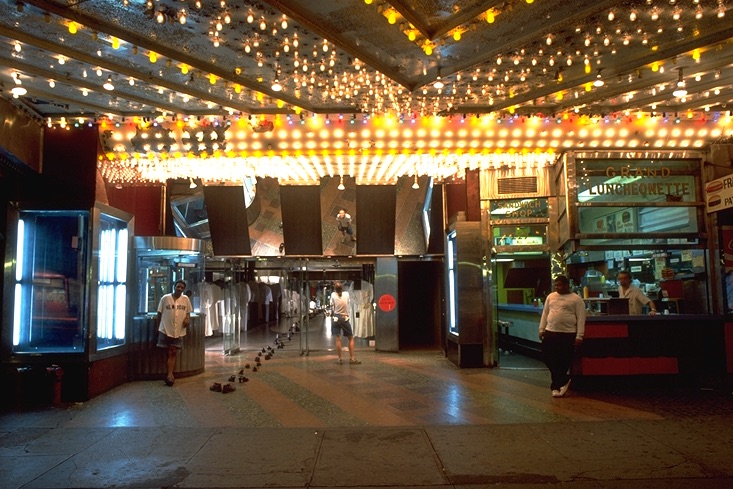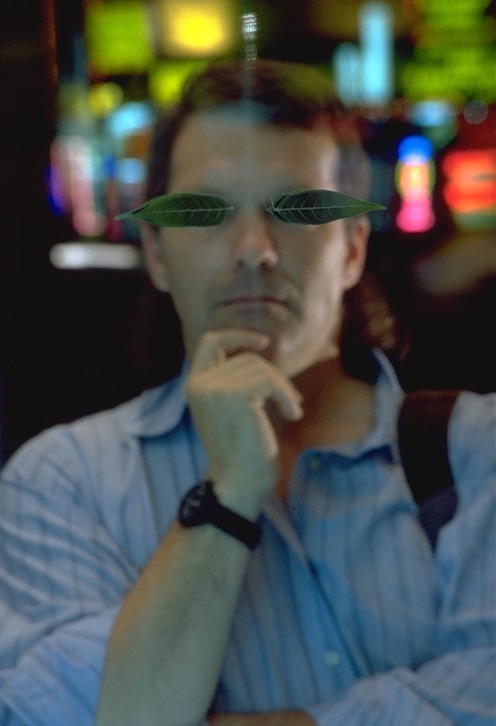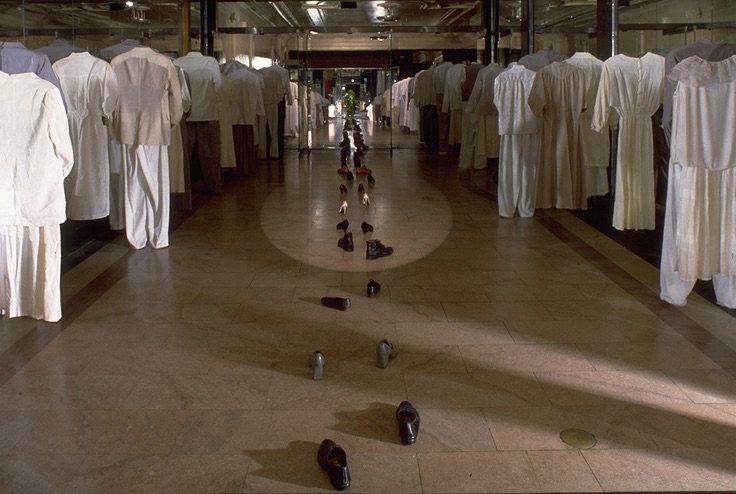Mimesis
MIMESIS
Selwyn Theatre, 229 West 42nd Street, New York, NY
Commissioned By:
Creative Time, Inc. with the 42nd Street Development Project of the New York State Urban Corporation
Dimensions:
12’ H x 30’ W x 120’ L (366 x 914 x 3657 cm)
Materials:
Mirror, clothing, shoes, foliage, fans, sound equipment, and light
The Twentieth Century story of Manhattan’s 42nd Street between 7th and 8th Avenues has been one of human desire satisfied. With its vaudeville, drugs, feature films, X-rated videotapes and topless peep shows, it is a place where humans have sought and found something very primeval. It is a place that answers fundamental needs, which are in many ways very natural – yet the street is about as far as one can get from natural order as it existed before human intervention. Few places are as totally human as this.
Within this context, Mimesis explored the relationship between present human reality and core, natural source – nature and culture.
On the theater façade, the surfaces that normally advertise what is playing were replaced with mirrors. At eye level, a pair horizontal green leaves stared out from the reflective surfaces, suggesting the interpolation of a different reality than one assumed.
The ticket booth emitted a deep heartbeat and held another mirror where the standing ticket seller would typically be. The rear of this mirror supported a tapered glass vessel filled with blood.
The focus of the theater front was a wall of glass doors where one would normally enter. Each had two mirrors, one where the head is normally and the other, below, at crotch level. These mirrors were proportionally sized.
Beginning at your feet outside the doors and running in a long line down the inside of the lobby were many pairs of shoes, lined up and seemingly on the move.
A crowd lined the left and right sides of the long lobby, a parade of human effigies as pale shells of empty clothing. At the street these were of adult stature, but descended in implied age as one ventured farther into the depth of the lobby – progressing toward a state of innocence.
The center of the perspective contained a rather small figure composed of verdant greenery, a lush topiary implying an original state. The audience, implicated in the crowd (hence in the work), was therefore implied as descending from this manifestation of natural order – the topiary figure.
As if in an epiphany, a brilliant burst of light energy suddenly flashed out from this deep, curious focus of the work. Everything was at once illuminated with great intensity, lighting up the viewer in turn.
In the matrix of myriad reflections, the street, the audience and the image within became fused.Mimesis was a work that suggested the revelation of a common origin for the lust, addiction, fantasy and longing which so energizes 42nd Street, common to the tree which once grew on the site.









